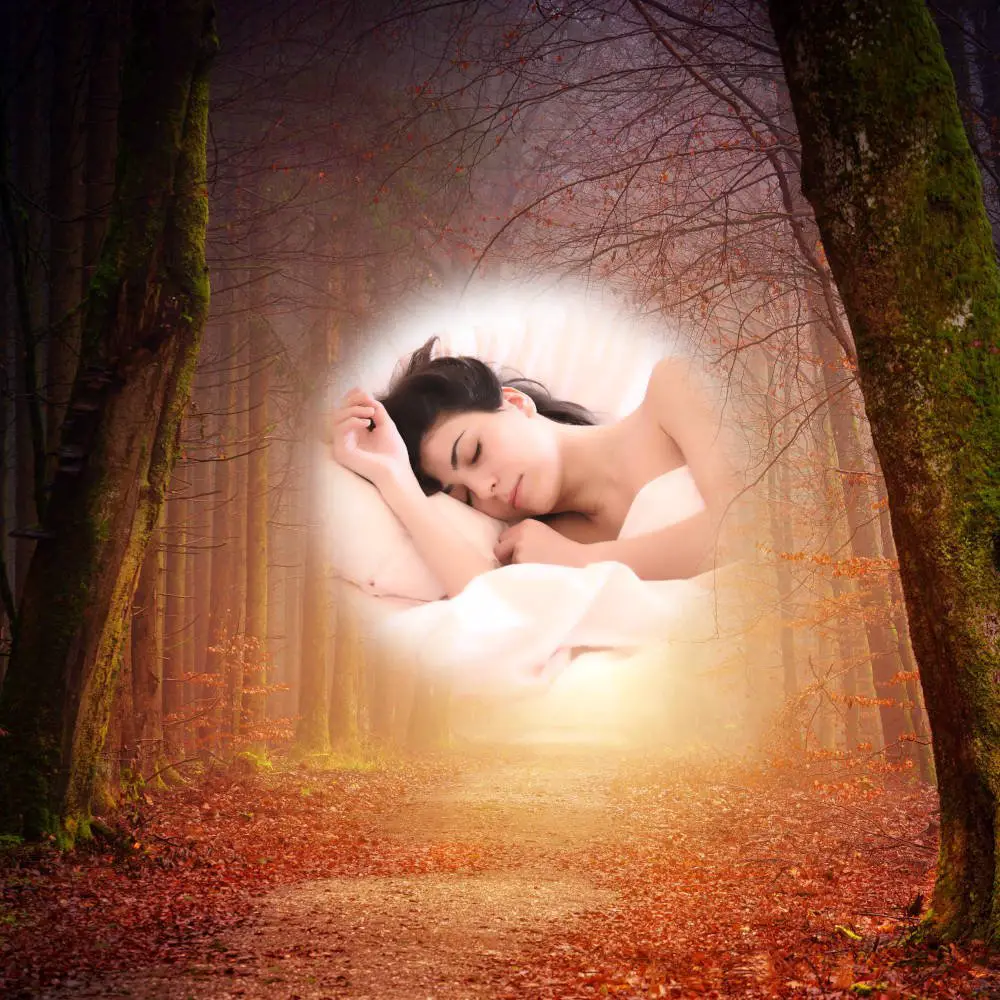Magical Properties
17 Essential Oils With Magical Dream Properties
By Mark Piatt
Updated on April 19, 2022
When you make a purchase through our links, we may earn commissions from Amazon and other retailers. You can learn more about our affiliate and privacy policy here.
Can essential oils make you dream?
The magical dream properties of essential oils are not just magical but are real. There is plenty of anecdotal evidence and some science to back up the fact that smells can contribute to your dreaming.
If you are interested in possibly enhancing your dreams or enhancing your dream recall using essential oils, then stick around. I think you may find this topic interesting.
Everyone dreams. Some of us can vividly remember our dreams while others never or rarely remember their dreams. But even if you do not remember your dreams, we all dream. Some people have lucid dreams, prophetic dreams, scary dreams, pleasant dreams, and false awakening dreams.
I am lucky in that I can have lucid dreams. While I was in college, as part of a project in psychology, I undertook a semester-long study on trying to increase my lucid dreaming and dream recall. I wonder if I had used essential oils at the time if I could have increased both my lucid dreaming and my ability to recall my dreams?
Dreams allow our subconscious mind to go to work on the problems and experiences of the day and incorporate them into our deeper minds. Dreams teach us to know ourselves more deeply.
External factors can sometimes affect our dream state, including fragrance. Our limbic system processes aroma from essential oils and enlivens our dream state. This affects our emotions and memories, so it makes sense that smells can affect both.
Dreams help our minds put things together. Imagine, using essential oils to improve our dream state could make us all better people.
Some plants appear to have properties that can affect our sleep and dreams. Research has shown that aromas can play a role in enhancing our dreams and can affect how we dream. It is not just the aroma. It’s also the compounds that make up the aromas of some essential oils. Some of these compounds can have a psychoactive effect on our brains.
In this article, we will be looking at the essential oils that historically have the greatest impact on dreams. We will also explore how you can use those essential oils effectively to enhance different types of dreams. And finally, we will be looking at some of the compounds found in these essential oils that may explain why those specific essential oils can affect our dreams.
What are dreams?
“The dream is the liberation of the spirit from the pressure of external nature, a detachment of the soul from the fetters of matter.”
Sigmund Freud
Some people believe dreams are a magical connection between our realm and a realm full of wisdom and symbolism. Even though we all dream, science still does not completely understand the process of dreaming and what dreams mean.
Science believes that dreams are a way our brain processes the events in our lives and moves those memories into permanent storage. Dreams are controlled by “forebrain mechanisms”. The “forebrain” is the largest region of the brain. These mechanisms can influence our speech, abstract thought, pleasure, discomfort, planning, reasoning, and interpreting and processing of inputs from our senses, such as smell.
Our brainstem controls our heart rate, breathing, and rem sleep. It is during rem sleep that we dream. While we sleep, our brainstem stimulates the forebrain which in turn causes us to dream.
Also, research has shown that while we dream, the amygdala is more active during our dream state. This is important because it is the amygdala that deals with emotion.
The Science of Smells Affecting Our Dreams
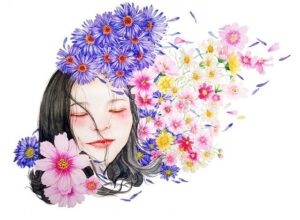 Today, many people use essential oils to enhance dreams or to help them remember their dreams. Is this magic, pseudoscience, or is there scientific and factual evidence to back up these claims?
Today, many people use essential oils to enhance dreams or to help them remember their dreams. Is this magic, pseudoscience, or is there scientific and factual evidence to back up these claims?
There is a difference between people who dream of “smells” and people who dream because of smells. There is very little research on the subject. What little research there is has not focused on people who dream smells, but instead, has focused on the effects of external smells on our dreams. Although, most of the evidence is based on thousands of years of anecdotal evidence gathered around the world.
Back in 1865, French scholar and physician Alfred Maury conducted a variety of self-induced sensory dream experiments. He had an assistant place certain smells under his nose while he slept that were associated with previous trips he had taken. He found that he would dream of those locations when his assistant would apply these smells to his nose.
Other researchers do not believe we smell while we sleep. They believe that we may briefly awaken enough to smell something that then influences our dreams. But either way, smells do have an impact on what we dream.
Other researchers don’t believe we smell while we sleep. They believe that we may briefly awaken enough to smell something that then influences our dreams. But either way, smells do have an impact on what we dream.
In other experiments, people were subjected to both pleasant and unpleasant smells while they slept. Participants reported more pleasant dreams when exposed to a pleasant aroma and reported more negative dreams when introduced to an unpleasant aroma.
Yet, for thousands of years, people all over the world have used smells and herbs to enhance their dream states or to better remember their dreams. Some may say this is nothing more than pseudoscience. But, possibly, it’s just that no reproducible measurable experiments have been done to prove or disprove that smells can be used to enhance dreams.
In the case of using essential oils to enhance dreams, we are not talking about the treatment of an ailment. Only to enhance our dream state. Everyone responds to smells differently. Not everyone remembers their dreams. For this reason, essential oils may enhance the dream state of one person but have no effect on another person or have a different effect on that person. The only way to know is to experiment and try it out for yourself. You have nothing to lose.
Safety
For this discussion, we are mainly talking about using essential oils in a diffuser. We may occasionally reference drinking a tea made from a plant that essential oils are derived from.
We do not recommend you ingest any essential oil, despite some companies claiming their oils are safe to ingest (although some essential oils may be safe to ingest if done properly). It does not matter how pure or therapeutic the essential oil is. Essential oils are distilled to capture the aromatic components of the plant to be used for aromatherapy, not to ingest. Promoting the ingestion of essential oils allows certain companies to increase their profits.
Essential oils are made up of many highly concentrated compounds. Some essential oils have hundreds of compounds. There have not been enough scientific studies to determine safe levels of these compounds in the human body. The short-term and long-term effects are not known. Also, there are no federal regulations concerning the manufacturing and ingestion of essential oils. This means you do not know exactly what is in the essential oil. Essential oils were created for aromatherapy, so that is what we recommend.
If you ingest essential oils, depending on the essential oil, you can easily burn the mucosa of the mouth, esophagus, gut lining, and the entire digestive tract and cause nerve pain and numbness with even a small amount of essential oil.
Some essential oils are toxic to the liver and kidneys. Plus, many essential oils can interact with medications.
Some essential oils can be safe if applied topically and by following the proper safety precautions. But again, in this discussion, we are mainly talking about using essential oils in a diffuser.
Also, many essential oils are not safe to use around youngsters and pets, that includes using essential oils in a diffuser. Please check with a professional before using essential oils around young children. For a list of essential oils that should be safe around cats and dogs, check out our article “Essential Oils For Odor Elimination”. For a list of essential oils that can be used for fish, check out our article “Are Essential Oils Safe For Fish”.
Disclaimer:
Information provided in this description is for educational purposes only. For possible treatments of physical or mental diseases, please seek a trained and licensed health professional. Enchanted Aromatics is not responsible for any adverse side effects resulting from the use of any suggestions, products, preparations, or procedures mentioned or from following historical uses of essential oils.
With all this in mind, let us now take a closer look at individual essential oils that may be useful to enhance your dream state.
What Essential Oils Make You Dream?
Mugwort
Lavender
Chamomile
Rose Oil
Clary Sage
Sandalwood
Helichrysum
Ylang Ylang
Juniper
Geranium
Cypress
Patchouli
Bergamot
Grapefruit
Spearmint
Vetiver
Anise
Magical Dream Properties of Essential Oils
Mugwort (Artemisia vulgaris)

We start this discussion with mugwort because it is known as the “dreaming herb” and as the “witch’s herb”. Many believe that mugwort has magical properties, including the ability to induce prophetic and lucid dreams. People have successfully used this essential oil/herb to help induce out-of-body experiences. For thousands of years, mugwort has been used in a variety of protection rituals. It can also be used to enhance your intuition.
Mugwort is a member of the daisy family. It grows about 6 feet tall and has yellow to reddish-brown flowers. It goes by many other names such as holy of holies, “The mother of all healing herbs”, artemisia, felon herb, St. John’s herb, chrysanthemum weed, sailor’s tobacco, Indian wormwood, and moxa. Some people view mugwort as a weed.
Aromatic Properties of Mugwort
The plant itself has a sage-like smell (though not as nice) and a bitter taste. The essential oil smells different compared to the plant. The essential oil has a light, earthy aroma that is a little on the sweet side – similar to spicy peppermint. When the plant is burned, it smells like marijuana.
Magical Uses of Mugwort
Mugwort is considered magical and sacred by cultures around the world. Individuals who have problems sleeping or have disrupted sleep have successfully used mugwort alone or in combination with other herbs such as skullcap (Scutellaria lateriflora), passionflower (Passiflora incarnata), betony (Stachys betonica), and/or motherwort (Leonurus cardiaca).
People who use mugwort to help them sleep have reported that mugwort intensifies or enhances their dreams and can help to recall their dreams. Some people who only dream in black and white have also reported that mugwort allows them to dream in color.
It has been reported that the aroma from mugwort can increase your conscious dream state, improve dream recall, increase vividness, and can induce lucid dreaming. Some also report mugwort enhances that state between being awake and falling asleep. This state is known as the hypnagogic state. Some describe this state as a slightly hallucinogenic state.
Others have reported that mugwort can enhance some of the other senses while dreaming. Some have reported that mugwort allows them to experience or enhance their lucid dream state.
People burn mugwort as incense or smoke it to mediate or enter a trance-like state. They believe it provides a direct channel to lunar magic and helps to open your third eye to your dream state. Today with essential oils, you can also diffuse mugwort in a diffuser.
History of Mugwort
Mugwort’s generic name is from the Greek moon goddess Artemis, a patron of women. The reason for this is mugwort has long been used as a remedy for the menstrual cycle and to help ease women into menopause.
For over 13,000 years, the Chumash Indians of North America have used mugwort in their ritual practices and to enhance their dreams. They have referred to mugwort as the “dream sage”.
Romans would use the herb to induce lucid dreaming. They would also plant the herb along the roads so travelers could rub it on their feet to help relieve their aching feet.
Anglo-Saxon tribes considered mugwort one of the 9 sacred herbs. The herb would be given to travelers to help them fight against exhaustion on their long journeys or to protect them from sunstroke, wild beasts, and evil spirits.
In ancient Britain, people would ingest mugwort to cure them of “elf shot”, a term that was used to describe general sickness.
It is written that St John the Baptist wore a girdle of mugwort to help him combat exhaustion when he set out into the wilderness.
In Holland and Germany, people would wait until St John’s eve to harvest their mugwort to provide extra protection against illness or bad luck.
In many pagan religions, mugwort holds a special place and is used in many magical practices. It can be used as incense, smudging, and spell work.
On St John’s eve, a crown made of mugwort is worn to protect one from an evil possession.
In some pagan rituals, during the summer solstice celebrations, a belt made of mugwort is worn while dancing around the fire. The belt will then be thrown into the fire to help ensure continued protection throughout the rest of the year.
Systemic Properties of Mugwort
Depending on the type of mugwort used (common camphor, common chrysanthenylacetate, mugwort Douglas, mugwort great), It can have between .2% – 11.5% of α-thujone and between 2% – 34% of β-thujone.
Thujone is famous for being one of the main compounds found in absinthe. It is a powerful psychoactive substance. Thujone is known for stimulating mood-elevating effects at low dosages and can have psychoactive effects on the human body including the inducing of hallucinations.
Thujone can be dangerous if ingested in large quantities. It is a GABA receptor inhibitor. This means it can cause neurons to fire more easily, which can cause muscle spasms and convulsions, which could lead to death. The addition of pure thujone in foods is not permitted in the United States. Today Absinthe sold in the United States must be free of Thujone.
Camphor makes up about 10% – 20% of mugwort. Its cooling minty scent is unforgettable. It is one of the main ingredients in various cold rubs. Camphor can help with increasing your focus and clarity. Some will use camphor to enhance their psychic abilities including divination and water scrying. For these reasons, camphor is considered a powerful magical ingredient.
Artemisia makes up between 15% – 55% of mugwort essential oil. The compound can help unlock your deep dreams. Research has been conducted that this compound creates lengthier and more complex dreams.
Fabulous Franny makes a wonderful-smelling Mugwort.
Because of the moderate thujone and camphor content, mugwort should not be diffused near children, during pregnancy, or while breastfeeding.
Lavender (Lavandula angustifolia)
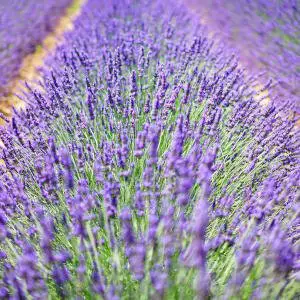
Lavender has been used for at least 2500 years. There are over 30 different varieties, each having unique aromas and properties. But when most people think of lavender, they are thinking of Lavandula angustifolia. This is the species we will be referring to throughout this article.
To learn more about the magickal properties of lavender, check out my article “What Are The Magical Properties Of Lavender?“.
Other species have harsher chemistry that is not conducive to dreaming.
Lavandula angustifolia is known as “common lavender”, “English Lavender”, elf leaf, nard, nardus, and spike. The flowers are quite fragrant.
The plant has many uses but is probably most famous for being used as a perfume and for helping people to sleep. Lavender is well known for promoting deeper and longer sleep. The reason it has been used for sleep disorders is because of its relaxing, and calming aroma. It is said that one sniff of lavender will chase away fear, stress, and worry and add calm and peace to your life.
Most people associate lavender with serenity. You could either use the lavender essential oil in your diffuser, or you could add a few drops to a cloth that you place under your pillow. You can even make a sleep pillow, that includes lavender flowers.
Aromatic Properties of Lavender
Lavender has a delicate, sweet smell. The aroma is floral, herbal, and with a touch of evergreen woodsy type aroma. Some people can also detect soft, smoky undertones as well.
Some people do not like the smell of lavender. The aroma is made up of many different types of amino acids. The receptors in people respond in different ways to these amino acids, which results in some people disliking the aroma.
Magical Uses of Lavender
The purple flowers of lavender help to inspire psychic activity, and dream recall, and can help manifest change.
To help ward off evil spirits, people will sprinkle lavender flowers around the floor.
Since lavender is synonymous with serenity, it is associated with the crown chakra.
Out of the 7 chakras, the crown chakra sits at the top. In a brief nutshell, the crown chakra is the seat of the true self. It is considered the bridge between the body and spirit. It is the giver and receiver of spiritual consciousness. The crown chakra is represented as violet or white.
Lavender not only helps to remove exhaustion and restlessness, but it also increases mental activity which will help prepare you to have conscious dreams.
Magical powers include love, protection, sleep, longevity, purification, happiness, and peace.
History of Lavender
The ancient Egyptians would use lavender as part of the mummification process and as perfume.
Romans would use lavender as a perfume, for bathing, cooking, and scenting the air.
In medieval France, they would wash their clothes in lavender.
In the bible, lavender is referred to as spikenard. The ointment used by Mary to anoint the feet of Jesus was an ointment made of lavender (spikenard).
People have also used lavender to help ward off infection. During the great plague of London in the 17th century, lavender was used as a remedy.
Systemic Properties of Lavender
In some cases, lavender has been proven to reduce stress better than some medications.
The calming effects come from a chemical known as Linalool. This compound makes up about 28% of Lavender. This chemical is known as a monoterpene that has anxiolytic calming effects and can give a sensation of drowsiness. Linalool has been used to successfully treat insomnia and to treat anxiety disorders.
About 3% – 4% of lavender is made up of a chemical known as β-Caryophyllene. This compound is known as being the first approved dietary cannabinoid. It was one of the first cannabis-derived compounds other than THC, CBD, and CBN to be marketed. And surprisingly, it is one of the compounds that contribute to the spiciness of black pepper.
β-Caryophyllene can bind to CB2 receptors located within our peripheral endocannabinoid system. This results in many benefits including reducing inflammation, pain relief, reduce alcohol intake, reduced anxiety, and reduced depression.
It is some of these benefits that may result in you having better sleep, resulting in the ability to have better dream recall.
For a fantastic smelling lavender check out this Lavender by hand Craft Blends. This brand takes great pride in its essential oils and has all their essential oils tested by an independent lab for purity.
Chamomile (Chamaemelum nobile)
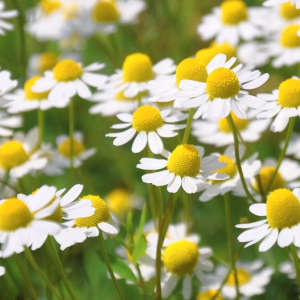
Chamomile is known as “the plant’s physician” since it can prevent and cure some fungal and bacterial infections. 2 varieties are commonly used, English/Roman chamomile (Chamaemelum nobile) and German Chamomile (Matricaria recutita). Although both have similar properties, we will be focusing on Roman chamomile.
It’s a perennial that grows 4-12 inches high, which makes for a good ground cover plant. The flowers are like a daisy flower, but with turned-down flowers and the flowers smell like green apples. Roman chamomile is usually grown in Britain.
Chamomile has long been used to reduce pain including pain caused by headaches. You can also find chamomile in various remedies to promote digestion, liver support, and nervous disorders.
People will also use chamomile as a general health-promoting tonic.
Chamomile is also used as a natural deodorant, hair wash, and perfume.
Chamomile is probably most well-known for its ability to promote sleep. Chamomile has powerful relaxant properties, which make it a good candidate for dream work. In the past, it has even been used to sedate people undergoing procedures such as cardiac catheterization.
As a result of all these properties, chamomile is one of the most sold herbs in the world.
Aromatic Properties of Chamomile
Chamomile has a fresh, sweet aroma with fruity and herbaceous undertones. The soothing aroma is sometimes compared to an apple-like fragrance.
Magical Uses of Chamomile
Depending on the religion, chamomile is usually associated with the sun, but can also be associated with the moon, Venus, occasionally, Mercury, Leo, and the element of water.
It can be used to invigorate the 5th chakra, (throat chakra).
Chamomile is used in various spells, including spells concerning prosperity, money, peace, love, tranquility, and purification.
For more information on how chamomile can be used in magick, check out our following article “What Are The Magical Properties of Chamomile“.
It can be used to help remove spells cast against you or others.
The purification properties are especially useful for those wanting to use chamomile to assist them to dream. Chamomile will help clear and calm your mind, allowing you to reach a heightened state needed for meditation or relaxation.
Allow the sweet scent to take over your thoughts and balance your emotions. Having a drink of chamomile tea before you go to bed or using chamomile essential oil in a diffuser near your bed may help promote a restful night’s sleep with pleasant dreams.
History of Chamomile
In Egypt, chamomile was used to help treat fevers and the plant was dedicated to their sun god Ra.
The Romans would use chamomile as incense. Roman chamomile gets its name when a 19th-century plant collector found some growing in the ruins of the coliseum in Rome.
It is considered one of the 9 sacred herbs of the Anglo Saxons.
People have long used chamomile as a gentle sleep agent, anxiety reducer, and a mild sedative.
Systemic Properties of Chamomile
Researchers believe the ability of chamomile to promote sleep mostly comes from a flavonoid called apigenin. This compound binds to certain receptors in the brain, resulting in a mild sleep-inducing effect. Other benefits of apigenin include improving brain and heart health and easing anxiety. Apigenin acts as a free radical scavenger and antioxidant that can diminish oxidative stress.
Roman chamomile can have up to 37% of a compound known as isobutyl angelate. This compound is known to have psychostimulant and mood-altering properties. Studies are being conducted on this compound for treating various illnesses, including ADHD.
It is thought that chamomile can treat insomnia through the major inhibitory neurotransmitter in the central nervous system, γ – aminobutyric acid (GABA).
It is believed that chamomile has a positive effect on monoamine transmitters such as serotonin and dopamine, which are both related to sleep and mood.
Even though the effects of chamomile related to helping one sleep, reducing anxiety, and improving one’s mood are noticeable, there have not been enough concrete studies on this subject, mostly just circumstantial evidence.
The exact mechanism that causes these effects is not well understood.
For a fresh, slightly fruity-smelling chamomile, check out this Chamomile by NOW.
Rose Oil (Rosa damascene)
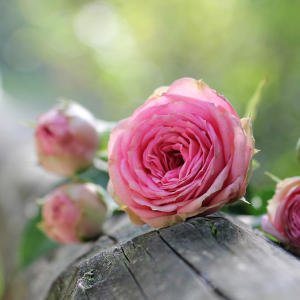
The aroma of roses is unmistakable. Roses are associated with love, beauty, indulgence, celebration, and spiritual worship. Rose oil is known as the “Queen of Oils” because it has powerful topical and emotional benefits.
Out of the 150 species of roses, rose essential oil is usually made from 6 species, but Rosa damascene (Pink Damask Rose) is the most prevalent and the one we will be referring to. It is widely used in the perfume industry because of its rich floral scent.
Roses and rose oil have calming properties that can soothe emotions and help promote relaxation before you go to sleep.
But one serious drawback of this essential oil is the price. To make 16 ounces of rose essential oil requires 10,000 pounds of rose petals. It takes 30 roses to make a single drop. Plus, the distillation process must happen on the same day the petals are harvested. At times, rose oil can be more expensive than gold.
For this reason, most people will use rose absolute. Still pricy, but nowhere as expensive as pure rose essential oil.
Absolute oils are extracted using a solvent – usually when the plant material is too delicate to be extracted through steam distillation.
Absolute extraction has much higher yields compared to steam distillation. Absolute extracted oils also tend to be more concentrated compared to steam-distilled oil. For this reason, absolute oils tend to be popular with perfumeries.
Aromatic Properties of Roses
Very rich and sharp with a mild spiciness and of course, an exquisite sweet floral aroma.
Magical Uses of Roses
Roses are one of the most symbolic flowers. She is so precious that her delicate petals are protected by thorns.
Roses are associated with the Greek goddess of love and beauty, Aphrodite, and her lover Adonis. Some also associate roses with Eros.
Rose corresponds to the sign cancer, balance, Sagittarius, Taurus, Venus, and the elements of water and air.
In a Tarot deck, roses symbolize balance.
The vibration from the aroma of the rose promotes tranquility and positivity.
When creating love potions and love rituals, rose oil is usually at the top of the list as the main ingredient.
Some people will bathe in rose water to enhance positive qualities such as love, health, and intuition or to gain confidence and courage.
There are all sorts of spells that include rose as an ingredient. This includes spells for reconciliation, friendship, good luck spells, anxiety removal, fertility, harmony, healing, happiness, etc.
You can add roses to spells or charms to ward off negativity and evil energy or to invite positive spirits.
The aroma of roses can bring harmony to your life and increase your wisdom.
Some include rose oil as a powerful ally when communicating with spirits or “contacting” the other side and when dabbling in divination.
People will use rose oil to sanctify objects such as amulets and talismans.
You can sprinkle dried rose petals in your bath to invigorate the aura and energize your soul.
And finally, the aroma of roses can help to encourage prophetic and lucid dreaming. This in turn can help us with our higher self.
Some claim you can make a mild infusion with rose petals that you drink before you go to bed. They believe this can increase your chances of contacting angelic forces that will bring you more wisdom and awareness.
History of Roses
We know roses have been around for at least 35 million years.
Nearly everywhere in ancient times and in modern times, people were anointed with various oils and scents. Rose oil is one of the most used oils for anointing people.
Ancient Egyptians would use the aroma of roses to help them enter deep states of concentration and meditation. They also believed that various deities were embodied in the smoke and scent of various plants burned in their temples, especially roses.
We know roses were being cultivated in China by 500 BC.
Throughout the middle east during the Roman period, there are numerous records of roses being cultivated. The Romans would use it as perfume.
Various factions in England during the 15th century would use the rose as their symbol. The battle between York and Lancaster became known as the “War of the Roses”
Systemic Properties of Roses
About 16% – 35% of rose oil is made of a compound called Citronellol. This terpene is also found in some strains of cannabis.
This compound can help with constricted breathing. It is believed this compound can improve sleep quality and reduce anxiety.
A study was recently conducted on Iranian hospital personnel who were stressed and overworked during the recent pandemic. There were significant positive changes in the sleep quality and anxiety levels of individuals who inhaled rose oil.
Rose oil is made up of about 2% – 25% of another terpene known as Geraniol. The terpene can enhance your mood, relieve anxiety, reduce insomnia, and reduce stress levels.
Plant Therapy makes a beautifully smelly Rose Absolute oil.
Clary Sage (Salvia sclarea)
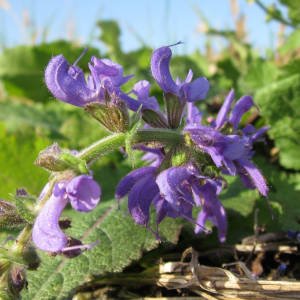
Clary sage is considered one of the most recognized magical herbs. It is considered a predominantly relaxing herb and has been used by many cultures to treat various eye issues and other diseases.
Clary Sage is a short-lived herbaceous perennial that grows about 3 feet high, and the leaves tend to show a bit of purple. The herb produces luscious spikes of purplish flowers that will start to bloom during the spring and will last through mid-summer.
Other names the herb goes by include Muscatel sage, clary, clear eye, Europe sage, see-bright sage, garden sage, common clary, and eyebright.
It turns out that clary sage is one of the heaviest essential oils. Clary sage tends to have a long-lasting aroma.
Aromatic Properties of Clary Sage
Clary sage has a soft, earthy, floral aroma punctuated with nutty and fruity tones.
Magical Uses of Clary Sage
The plant gets its name from its ability to clear out an irritated eye. People would place a clary sage seed on the eye. This would soon turn to mucilage and carry out any irritants. Note: This practice is not recommended as the hard seed can damage the eye.
Clary sage is considered a cleansing and purifying herb. Therefore, it is used in many cleaning spells, protection spells, abundance spells, and money spells.
Traditionally, people have placed a small amount of clary sage in their dishes to increase desire.
Clary sage is a good calming herb that can help provide you with a good night’s sleep. The aroma can help induce a feeling of well-being and can help trigger both negative and positive feelings.
Clary sage can induce a feeling of relaxation, clarity, and calmness. For this reason, clary sage can be a good essential oil for triggering dreams.
For more information about the magical uses of clary sage, check out our article, What Are The Magical Properties Of Clary Sage?
History of Clary Sage
Clary sage at one time was considered the most important and appreciated herb of all time.
There are written records from ancient Greece documenting its use dating back to the fourth century BC. Theophrastus, whose interests ranged from biology, physics, ethics, and metaphysics, wrote about clary sage in his work “Enquiry Into Plants (Historia Plantarum)”. This set of 10 books was considered one of the most important books of natural history that were written in ancient times.
Ancient Romans would refer to clary sage as the “holy herb” and be included in many of their religious practices. Supposedly it could dispel evil spirits and negative influences.
Clary sage can be used as a food flavoring and generous amounts of the leaves can be added to a salad.
Medical gardens would not be complete without clary sage being grown.
Systemic Properties of Clary Sage
There have been scientific studies to back up the claims that clary sage has soothing properties and properties that can combat depression and stress.
Linalyl acetate makes up about 66% – 78% of clary sage. This compound is a monoterpene ester that is a natural sedative with a pleasantly fruity odor.
A few other therapeutic properties of the compound include anti-inflammatory qualities, analgesic qualities, and anti-hypertensive qualities.
Just like lavender, clary sage also has Linalool (about 9%). See Lavender for the benefits of this compound.
For a relaxing-smelling clary sage, check out this Clary Sage from GYA Labs which has many great reviews on their clary sage essential oil.
Sandalwood (Santalum album)
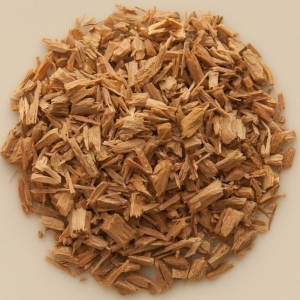
Sandalwood is one of the oldest fragrances. It is one of the most fragrant woods and can retain its fragrance for decades. Sandalwood is renowned for its many medicinal and spiritual properties. There are 15 species of sandalwood, but most of the essential oil comes from a single species – Santalum album. This is the species we will be focused on.
As a result of overharvesting, sandalwood is one of the most expensive woods in the world. The wood currently costs about $2500 per 1 kilogram (2.2 pounds). An ounce of sandalwood essential oil costs about $200 an ounce.
The government of India, where Santalum Album is grown, has very strict cultivation guidelines that must be followed. The wood can only be harvested after receiving government permission and only under the supervision of a forest range officer.
Since Santalum album from India is considered endangered, most of the sandalwood essential oil sold in the United States and Europe today comes from the Australian sandalwood (Santalum spicatum). The main benefit of Santalum album over Santalum spicatum is that Santalum album has 3 times more of a compound known as santalol. This compound gives Santalum album a deeper aroma, more mystical, and some say, more peaceful.
Sandalwood is considered one of the most popular incense fragrances in the world. Sandalwood is known for its sweet woodsy smell. For this reason, sandalwood is often used as a base in colognes, perfumes, aftershaves, and other cosmetics.
Being a base note, sandalwood is a great essential oil for complementing other oils, especially oils that have fruity, floral, or earthy undertones.
Aromatic Properties of Sandalwood
Sandalwood is a rich and featured scent that is quite distinctive. The wood aroma is characterized by a musky, earthy aroma with subtly sweet, and spicy notes. Some have characterized the aroma as being sensual and seductive while at the same time, being smooth and creamy.
Magical Uses of Sandalwood
Since the beginning of recorded history, sandalwood has been described as having protective properties – probably because people observed that termites would not attack the wood. It is known as the oil of meditation and inner peace.
Today sandalwood can be found in many types of pagan rituals. When performing rituals using sandalwood, the sandalwood is used for purification, healing, consecration, relaxation, and peace. The soothing properties of the wood can direct one’s attention to the divine realms. You will also find sandalwood being used in business and protection magic.
The calming, sedative effect of the aroma can aid one in meditation.
Sandalwood corresponds to the moon and water.
Some believe that the scent of sandalwood is one of the most pleasing scents to the gods.
After grinding the wood to a powder, it can be placed on the forehead for anointing purposes. Also, prayer beads are carved out of the wood because of their protective powers.
History of Sandalwood
The earliest writings from India describe sandalwood as being used as holy incense.
It has also traditionally been used to heal various conditions such as sunburns, acne, rashes, herpes, ulcers, and various other infections.
In India, you can find intricate carvings made from sandalwood.
Egyptians would use sandalwood during their embalming rituals.
In both China and Tibet, sandalwood plays an important role in their folk medicine because of its antiseptic properties of the wood.
Systemic Properties of Sandalwood
The two (but similar) compounds that make up about 70% of sandalwood are α-Santalol and β-santalol.
Science has shown these compounds have sedative effects on the body. There are also some suggestions that these compounds can help reduce anxiety.
Because of the calmative and anti-anxiety effects found in sandalwood, the oil can help put you in the right frame of mind to help you not only dream but also help increase your dream recall.
This Sandalwood essential oil from Rainbow Abby has a rich woody aroma with some earthy undertones.
For a more in-depth look of the magical properties of sandalwood, check out our article What Are The Magical Properties Of Sandalwood?
Other Essential Oils That May Help Promote Dreaming
Helichrysum
Affinity for the Sixth Chakra. Opens the heart and connects the body and spirit. Stimulates the right side of the brain which increases brain activity and awareness. It is thought that helichrysum can treat insomnia.
Ylang Ylang
Promotes serenity and relaxation. Use to cleanse your space. Use this oil to melt the tension away to help promote a night of more peaceful sleep.
To learn more about the magickal properties of ylang ylang, check out my article “What Are The Magical Properties Of Ylang Ylang?“.
Juniper
This is a useful essential oil in pagan rituals. Properties of juniper essential oil include cleansing, protection rituals, and removing evil spirits. Juniper is often used in various burial rituals. It is said that juniper can enhance psychic abilities. Magic wands and staffs are commonly made from juniper. To learn more about the magickal properties of juniper, check out my article “What Are The Magical Properties Of Juniper?“.
Geranium
In magical circles, geranium is well known for bringing balance, love, and acceptance. For dreaming purposes, the aroma of geranium can release anxiety, and anger, and can help combat depression. Can be used to restore the balance between opposing energies. Can be used in both dream work and astral travel.
Cypress
Can be used in scrying and past-life recall. Many Ouija boards are made of cypress because cypress strengthens the connection to spirits on the other side. You can also find wands made of cypress. This wood has been tied to spell casting and necromancy.
Patchouli
Use to help remove negative energy and calm the mind. This is a great essential oil to use for manifesting dreams. Can be used to balance the sacral and heart chakras. Herbalists will sometimes recommend rubbing diluted patchouli oil and the bottom of the feet and toes to induce deep, rejuvenating sleep and relaxation.
To learn more about the magickal properties of patchouli, check out my article “What Are The Magical Properties Of Patchouli?“.
Bergamot
Earl Grey tea is often used as a sleep aid. Do you know what one of the main ingredients of earl grey tea is? Bergamot. Instilling freshness and positivity are one of the benefits of bergamot essential oil. High in flavonoids, it is a good relaxant.
Grapefruit
The aroma can uplift you by creating a sense of happiness and joy. The smell of citrus is amazing for increasing your energy and vitality. Helps to strengthen your spirit.
To learn more about the magickal properties of grapefruit, check out my article “What Are The Magical Properties Of Grapefruit?“.
Spearmint
Can aid in psychic and verbal communications. Can be used to remove negative dreams while enhancing positive dreams. Spearmint is considered a psychic-enhancing tea, incense, or essential oil. Placing mint under your pillow is said to increase prophetic dreams.
To learn more about the magickal properties of spearmint, check out my article “15 Magical Properties Of Spearmint?“,
Vetiver
Known as the oil of tranquility, vetiver essential oil can modify your respiratory patterns while you sleep, which can result in better sleep quality, reduced snoring, and reduced headaches. Vetiver promotes a calm, relaxing atmosphere that can reduce anxiety, stress, and depression, which could result in having better dreams.
Anise
Use anise in dream pillows to keep scary dreams away and ensure a good night’s sleep. Anise can aid in divination rituals. A great oil to use when meditating.
Sweet Dreams
Dreaming can play a role in healthy mental and emotional states. Now that you know of some magical dream properties of essential oils, you can experiment with these essential oils to experiment with, enhance your dream space, and have fun. Remember, everyone responds differently to aromas, preparations, and practices. So, if one essential oil does not seem to work for you, try another essential oil. It doesn’t need to be one of the essential oils on this list. You never know how your physiology will respond to the aromas of essential oils. But now you have one more tool to approach your dream world with intention.
If you are interested in other magical properties of essential oils, check out this article entitled “15 Magical Properties of Essential Oils”.

